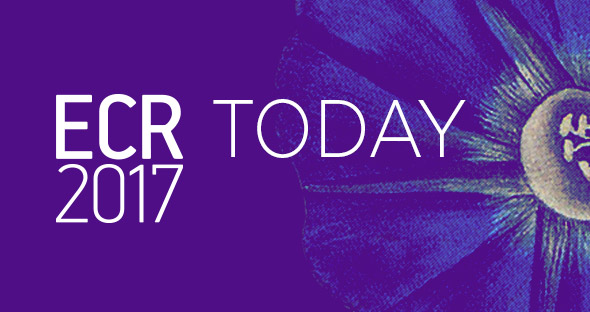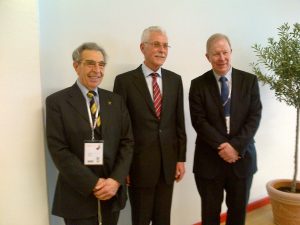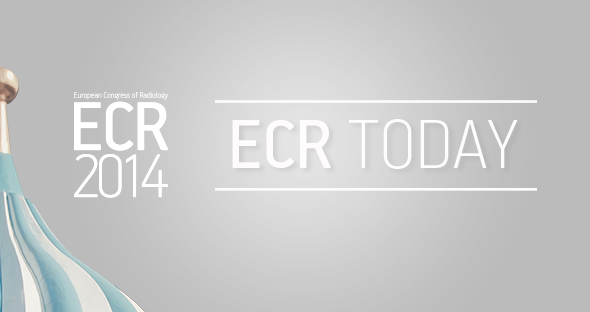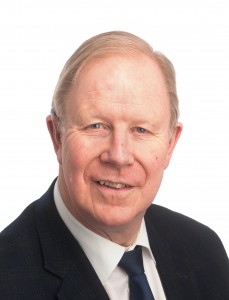
Watch the European Radiology 25th Anniversary session live on ECR Online, Friday, March 3, 16:00–17:30, Room Z
#ECR2017

25 years of success for the three editors-in-chief of European Radiology: Albert L. Baert, Adrian K. Dixon, Maximilian F. Reiser.
The ESR’s flagship journal, European Radiology, celebrated 25 years of publication in 2016. We spoke to Prof. Albert L. Baert, the journal’s Editor-in-Chief from 1995 to 2007, Prof. Adrian K. Dixon, who headed European Radiology from 2008 until 2013, and our current Editor-in-Chief, Prof. Maximilian F. Reiser. Together, they gave us a comprehensive account of the journal’s development during the last quarter of a century.
ECR Today: How have you seen the journal develop during the past 25 years?
Albert L. Baert: During this time period the number of published articles has increased spectacularly from 60 articles per year in the first issues to more than 400 per year now. For example, no less than 4,674 pages were published in 2016! European Radiology is now one of the most widely distributed and read scientific journals in the world. Simultaneously, the scientific level of the contents has improved steadily over the years as proven by the current excellent Impact Factor ranking.
Read more…

In recognition of his great service to scientific publishing in Europe and his distinguished clinical career, Professor Adrian K. Dixon from Cambridge, UK, was awarded the Gold Medal of the European Society of Radiology at ECR 2014.
Adrian K. Dixon is Master of Peterhouse, the oldest College at Cambridge University, and Emeritus Professor of Radiology, having been head of the department of Radiology for 15 years. He is also an honorary consultant radiologist at Addenbrooke’s Hospital, Cambridge.

Prof. Adrian K. Dixon from
Cambridge, United Kingdom.
From an Irish background, he was born in Cambridge where he earned a bachelor’s degree at King’s College. He qualified in medicine after clinical studies at St. Bartholomew’s Hospital London. He then specialised in general medicine, gaining his MRCP in 1974 before deciding to pursue a career in radiology (an appropriate career in view of his profound deafness). He qualified as a radiologist in 1978 and worked in paediatric radiology at Great Ormond Street Hospital, and in computed tomography at St. Bartholomew’s Hospital. In 1979, he became a lecturer at the University of Cambridge’s department of radiology. He earned his doctor of medicine degree for his thesis on computed tomography of the lumbar spine. In 1986, he was elected a Fellow of Peterhouse, where he became director of medical studies.
Read more…



